
Military Wireless in the Midlands Museum
The German SE90/40 Spy transmitter receiver
An original WW2 German Spy Transmitter receiver in its suitcase.
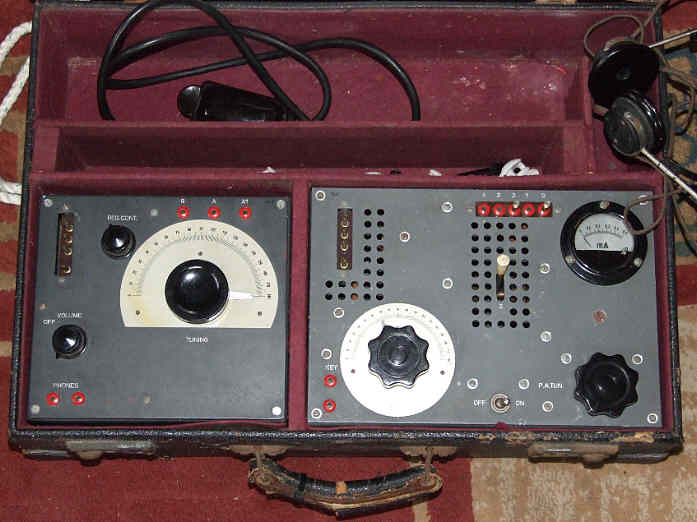
The set is called an SE90/40, the SE standing for Sender Empfanger (German for transmitter receiver) model 90 with a 40 Watt output power.
This suitcase set was a popular model used by the German Abwehr service, the German Military Security Organisation, throughout continental Europe.
When obtained the suitcase still had cobwebs and plaster dust, the type found in attics of old houses, so, was the set stashed away during the
war by some undiscovered German agent? Who knows but its certainly an intriguing thought.
Designed around 1940 the suitcase consists of three units, receiver, transmitter and power supply. The receiver uses three CF7 valves with an r.f.
amplifier stage, regenerative tuner detector and an audio stage. The transmitter uses two valves, a CC2 as oscillator and a RL12P50 as power output.
The transmitter tunes 6.5 to 16 MHz in two bands, 6.5 to 9 and 9 to 16 MHz but it is believed that there were possibly different frequency
ranges available, the more usual range being 3 to 8MHz. The receiver tunes a similar range but in a single band. The transmitter is fully tunable with the CC2 oscillator and no
facility for crystal control is provided. The receiver tuning does have a slow motion drive fitted but tuning is still quite sharp.
The receiver can resolve normal AM signals and with the regeneration advanced into oscillation Morse can also be resolved. The transmitter is
Morse only and has a meter to measure r.f. output enabling the output stage to be tuned to maximum. There are 4 tapping points for the aerial to
be connected to allow for various lengths of wire to be used. There is no connection between transmitter and receiver to allow the aerial to be
switched over so a separate wire would be needed for the receiver. This has two connection points, presumably for long or short wires.
Operation of the set under clandestine conditions must have been hard work. For a start the suitcase is very heavy, heavier than the British B2
suitcase set. The need for two wire aerials would be tiresome. The tuning dials are marked 0-180 so charts would be needed to arrive at the correct
tuning point for any given frequency and even then, the accuracy must be questionable. The tuning range of the transmitter is quite large on each
band, trying to set the transmitter to an exact frequency with the vfo, there being no crystal option, must have been, and still is quite hard.
One real odd thing though, all the lettering on the set, volume, on/off, regen, tuning, etc is in English, not German. Presumably, had the landlady
come across the set marked in German it would have set her off to the nearest Police station post haste. Being in English she might have thought twice
and could have been swayed by the agent with some tale of experimental radio and working for the British on a hush hush job. How the agent operator
was supposed to locate his base station on the receiver then set his transmitter to the required frequency is hard to fathom. Maybe this is why
the set was stashed in that attic and forgotten. Maybe the spy decided there was more to life and lived happily ever after by the seaside.
The Transmitter:
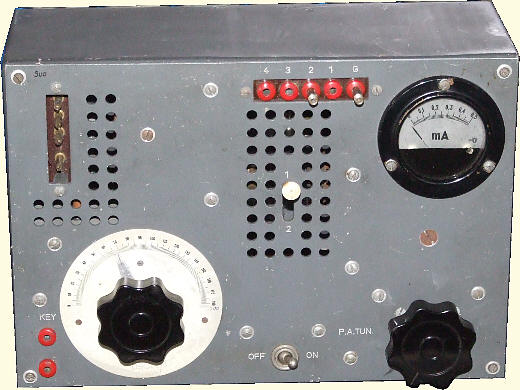
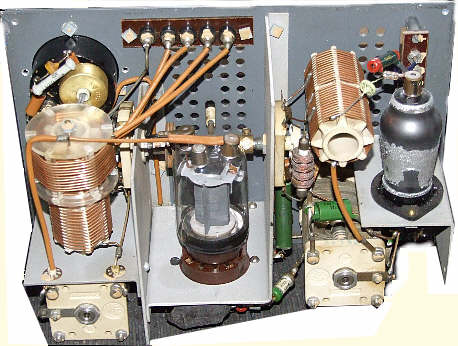
Two valve set, CC2 and RL12P50, 40w out, two band.
The Receiver:
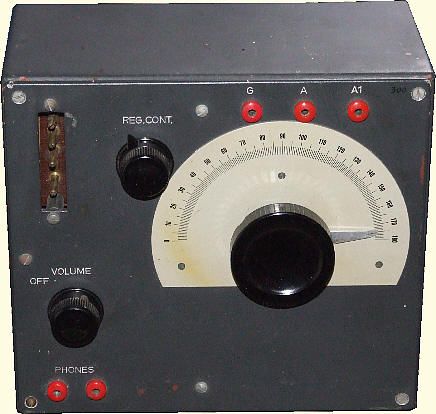
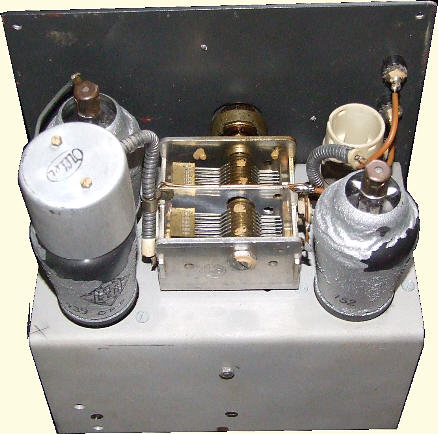
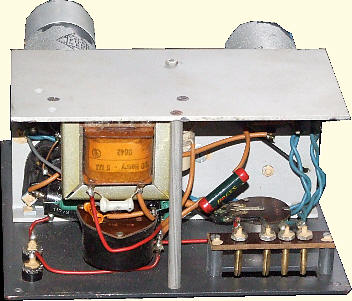
Three valve, all CF7, single tuning range.
The Power supply (presently under repair):
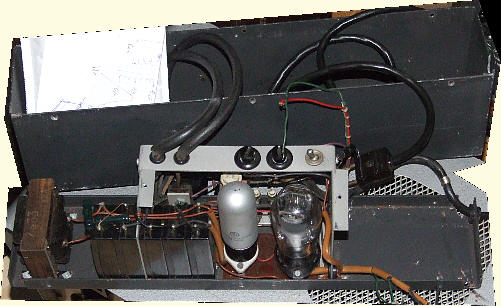
This supplies the receiver with 12v heaters and 150v stabilised ht. The transmitter feed is 12 heaters and 700v ht.
Send an e-mail to: Ben Nock, G4BXD
(If link does not work on your PC then send email to: [email protected] )
********* Pictures by G4BXD are G4BXD copyright ********
(If link does not work on your PC then send email to: [email protected] )